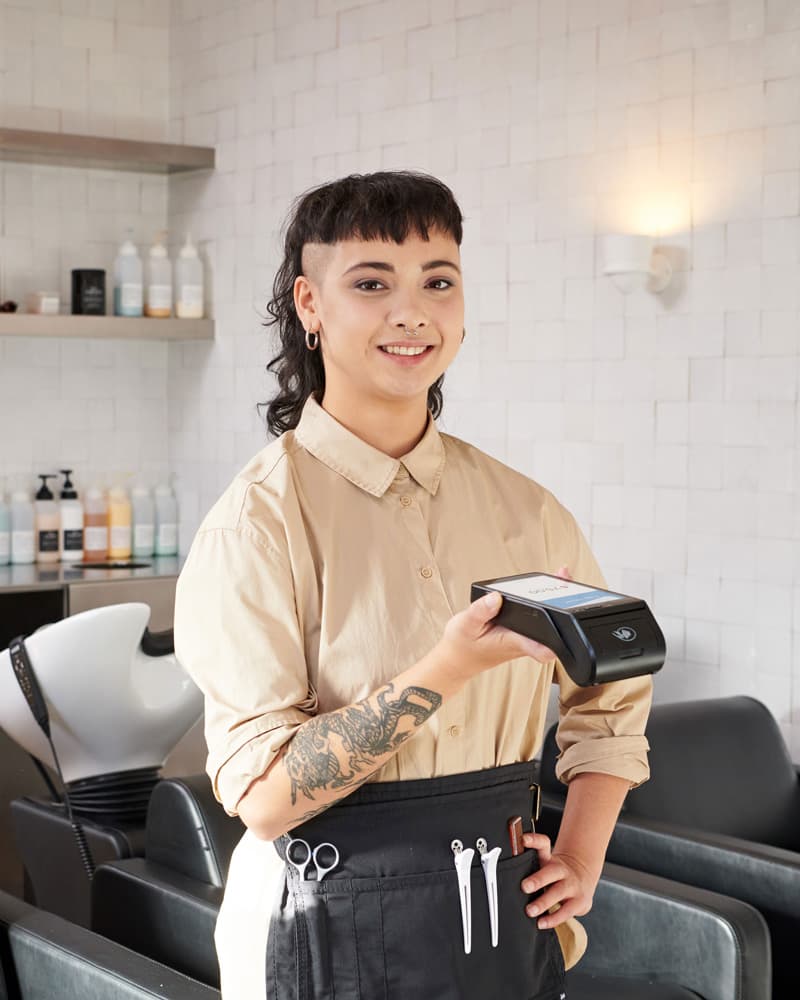
- Business Growth & Optimisation
How to Write a Successful Beauty Salon Business Plan
Discover the critical components to include in your salon business plan.
A business plan is far more than a simple document. Think of it as your pathway to business success. A salon business plan will help you outline and achieve your goals — whether that’s to start a salon from scratch, grow your business to new heights, or even expand into more specialised, complimentary markets. It’s a resource you can rely on every time you need to make a strategic business decision.
Writing a business plan doesn’t have to be difficult. You don’t need an accounting degree or an MBA to create a useful plan for your salon. Instead, this guide will show you how to write one from scratch without the complexity.
Why you need a business plan for your salon
There are lots of good reasons why you should write a business plan for your hair or nail salon.
No matter what type of business you run, it pays to have a solid understanding of your industry, your market, and how your business fits into the competitive landscape. Preparing a business plan forces you to meticulously and objectively assess the strengths and weaknesses of your business, and can help keep you on the right path to making smarter business decisions.
A business plan also provides your business with direction and structure to grow. As an entrepreneur, chances are you won’t be short of new ideas and opportunities. Sometimes the challenge lies in knowing which ones you should pursue. Some ideas are distractions. Others are money making growth opportunities. Having an up-to-date business plan, which includes your overarching business goals, will make it easier to identify which ideas are worth exploring.
Starting a salon business plan
The key is to remember that your business plan is a living document. It will grow and evolve with your business. For that reason, It pays to start broad — documenting the bigger picture behind your business — before diving into the specific strategies which may change over time.
Here are some things to consider.
What is the purpose of your business plan?
Understanding what you hope to achieve with your business plan will help guide the content within it. Are you looking to create a blueprint for expanding your salon business in another location? Perhaps your aim is to attract investors, or win over a business partner?
Whatever the objective, understanding the purpose of the document will help guide the contents.
Is your business idea financially feasible?
It is important to be realistic about the likelihood of business success. This requires research. If you’ve run a business before, then you’ve likely already crunched the numbers. If you’re new to business, it pays to ask for professional advice. The Hair and Beauty Australian Industry Association, a not-for-profit body, can be a great source of operational, industrial and compliance advice for salon owners.
Once you’ve established that your business idea has legs, you’re almost ready to start writing your business plan. Before putting pen to paper, it’s important to do two things
Set some tangible goals for your business
Whether your goal is to see a certain number of clients every month, or to upsell a certain volume of products, it pays to identify these goals early, and incorporate these into your business plan. This will give you the metrics you need to track progress over time.Recognise the threats and opportunities for success
Every business comes with a level of risk but being aware of these can help to minimise their impact on your business, or better still, turn threats into opportunities. Acknowledging potential challenges early means you have a better change of circumnavigating them or reducing their impact on your business as they arise.
Essential components of your business plan
There are plenty of templates that you can use to prepare your business plan. Here are some key elements that you should consider when preparing a business plan for the opening of your salon.
Executive summary
Though the executive summary sits at the beginning of your business plan, it is generally the last thing to be written as it summarises the key components of your business plan.
Remember, your business plan may come in handy for attracting business partners, securing investment or getting business finance approval. Use the executive summary as an opportunity to provide a compelling snapshot of your business — make it engaging and highlight how you plan to make it a success.
Business Overview
This section should provide key information about your business. What kind of salon are you running — and is it full-service, or niche? What makes it different from other salons in the area? Use this section to highlight your point of difference, and how your experience and expertise will contribute to the business’s success.
You should also use this section of the business plan to describe where you plan to run your salon, the size and scale of the premises, and any local amenities (such as parking or access to public transport) that would make your salon appealing to your target audience. This information will come in handy when it comes time to consider marketing your business, as you’ll need to know how much foot traffic your salon will be exposed to.
Finally, in this section you should also introduce your start-up plan and budget. This should identify any start-up capital you require to secure your premises and set up the salon, and how you plan to fund this set up.
Products and Services
Whether you’re opening a full-service day spa, or delivering a specialised niche service like nail art, this section of your business plan should outline the products and services you plan to offer your customers.
Consider things like customer demand for certain items, and whether your competitors provide a similar service. What are the costs associated with delivering these services? Are your prices reasonable, and within customer expectations?
If retail sales are part of your business strategy, consider how you will drive demand and sales to support your business goals. Will there be an incentive-based scheme to encourage staff to sell more products? Will product sales form part of staff KPIs? How will you train staff to sell without impacting the salon experience?
Customer and Marketing Strategy
Your business plan should also outline your marketing strategy, which hinges on your customer.
Outline your customer persona and what makes them seek out your salon products and services. Are they looking for a high-end, luxury experience, or are they after affordable, no-frills solutions? Perhaps they’re after express services that can be fit into a lunch break?
Once you know your target market and what will attract them to your salon, you’re in a strong position to market your business. Your plan should identify the best way to attract customers to the salon.
Here are some strategies that you might consider:
a referral program which rewards customers or other businesses who recommend your salon
paid advertising in local press
street signage
promotional discounts for new customers
content marketing via social media and other channels
set up your Google My Business listing
Make sure to outline a realistic budget for how much you are prepared to spend to attract new clients to your salon.
Operations and Personnel
How many stylists will it take to achieve your business vision? Will they be staff members, or contractors? Apprentices or seniors? Your personnel plan should outline your staffing requirements (including things like salaries) and trigger points for increasing your staffing numbers as your business grows.
Your business plan should also outline what equipment you’ll need to run your salon efficiently and profitably. This could include hairstyling chairs and equipment like scissors, as well as business and financial tools, such as booking software and an EFTPOS machine.
Financial Plan
Preparing a financial plan can be one of the more daunting elements of writing a business plan, but it is also one of the most critical. If your goal is to create a profitable, sustainable long-term business, then having a clear plan for how you will generate income is essential.
As part of your financial plan, you should identify and explain any assumptions about your financials, including any expectations for estimated sales — considering both the cost of goods and expected revenue growth over time. You should also outline your plan for breaking even, managing cash flow and projected profit and loss for the short-to-medium term of your salon.
Getting started with your business plan
When it comes to opening your own beauty salon, it pays to prepare for success with careful and considered planning. Seek advice from experts and peers in the beauty industry on what to include, and how to structure your business to safeguard your profitability and encourage growth over time. Most importantly, don’t worry if the first draft isn’t perfect.
A business plan is a critical first step in consolidating your ideas, and laying out a blueprint for growing your salon. Yet business plans are designed to be living, breathing documents that should evolve over time as your business grows, new consumer trends emerge, and industry shifts occur. Committing a business plan to paper is just the first step.

Let us help your salon grow.
Zeller Sales is here to help you succeed.
Leave your contact details and we’ll be in touch soon.
By sharing your details with us, we may contact you from time to time. We promise we won’t bug you — and you can unsubscribe from communications at any time.



